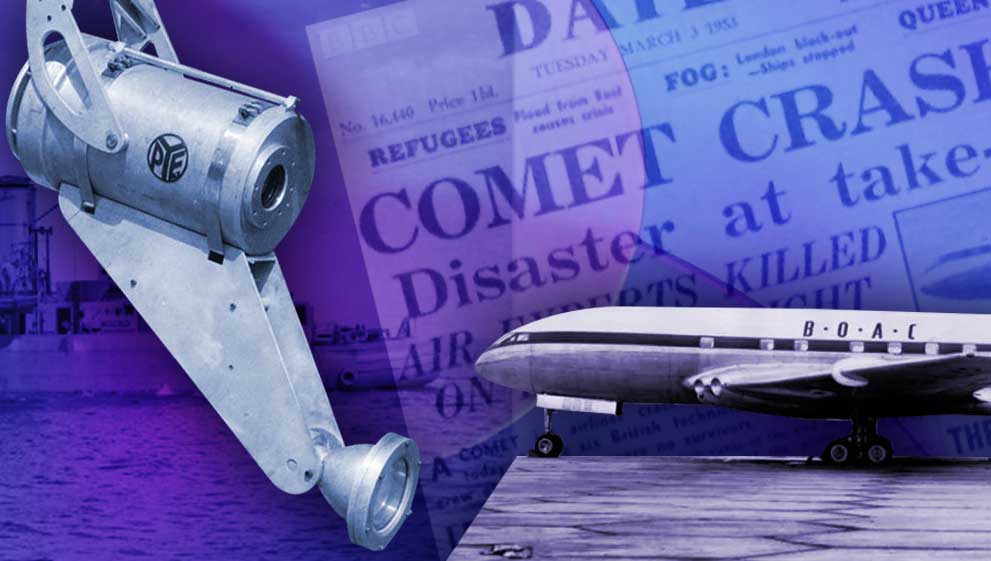In 1954 Pye & Marconi created the world’s first Stainless Steel underwater camera, for the purpose of finding a crashed Havilland Comet passenger jet.
Scheduled passenger Flight 781 operated by British Overseas Airways Corporation (BOAC) from Singapore to London. The De Havilland Comet passenger aircraft experienced decompression at altitude and crashed on January 10, 1954, killing all 35 people on board. The aircraft fell into the Mediterranean off the coast of Italy, close to the island of Elba.
Because Flight 781 had crashed over water, it was difficult to determine what had happened to the aircraft. In 1954, there was no defined methodology for investigating aviation accidents, and there were no cockpit voice recorders or flight data recorders (sometimes known as "black boxes") to aid crash investigators.
The Maltese private salvage vessel Sea Salvor and the Royal Navy ships HMS Barhill and HMS Gambia were involved in a comprehensive search for the aircraft. The search employed the first stainless steel underwater TV camera. The Pye & Marconi camera was housed in a cylindrical tube of stainless steel. It was equipped with remote focus, together with a video amplifier contained in a plug-in unit, which could be easily removed for servicing. Like its reactor-heart companions, the CM 21683 was fitted with stabilised glass and lens, and was radiant-resistant. It could be located up to 1,000 ft (300m) from it’s control unit, with power and control circuits being carried by a single multi-way cable.
Take a look at our stainless steel products page for our full range of products.
